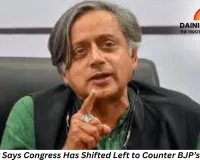Women's ODI World Cup Final Shatters Records: 50 Crore Indians Tuned In as India Clinches Historic Title
Digital Desk

From DY Patil Stadium to screens nationwide, viewership matches men's T20I World Cup final as women's cricket reaches unprecedented milestone.
India's women cricketers delivered more than just a championship on the DY Patil Stadium field in Navi Mumbai. They delivered a cultural moment. The Women's ODI World Cup final, which saw the Indian team capture their first title in 47 years after defeating South Africa, commanded the attention of 50 crore people across the nation—a viewership figure that places women's cricket squarely in the same arena as men's marquee tournaments.
The numbers tell the story of a shifting sporting landscape. On JioCinema alone, 18.5 crore viewers streamed the match, equalling the digital reach of the 2024 Men's T20 World Cup final. Another 9.2 crore watched via satellite television, mirroring the broadcast numbers of both the 2024 Men's T20 World Cup and the 2023 Men's ODI World Cup finals. For a women's sport still fighting for mainstream recognition, these figures represent validation at the highest level.
Nearly 40,000 spectators packed the DY Patil Stadium to witness the victory live, their roars echoing through a ground that reached capacity for a women's cricket match—itself a remarkable achievement. By tournament's end, approximately 3 lakh people had attended Women's World Cup matches across venues, setting a new attendance record for any women's cricket tournament globally.
The tournament's aggregate digital reach of 18.5 crore surpassed the combined digital viewership of the previous three Women's World Cup editions. This exponential jump reflects both improved broadcasting infrastructure and a growing appetite among Indian audiences for women's cricket. The surge began earlier in the tournament when India's group stage clash against Pakistan on October 5 drew 2.84 crore viewers—then a record for any women's international match. The final obliterated that benchmark.
What makes this moment significant extends beyond television ratings. The International Cricket Council, riding the momentum of this tournament's success, has announced a structural expansion of the sport's flagship event. The next Women's ODI World Cup in 2029 will feature 10 participating teams, up from the standard eight that have competed since 2000. The expanded format will feature 48 matches, compared to the current edition's 31, signalling institutional commitment to women's cricket's growth trajectory.
Industry observers note that sustained viewership for women's cricket hinges on consistent platform investment and scheduling primacy. Sunday afternoon matches, strategic broadcast timing, and star player visibility have traditionally driven engagement. The World Cup final, aired during peak viewing hours, exemplifies this principle in action.
The 47-year drought ending with India's championship adds emotional texture to the statistics. For generations of female cricketers, this victory represents validation of their profession's legitimacy. For broadcasters and sponsors, it represents market opportunity. For the Indian audience, it represents a reckoning—women's cricket is no longer a secondary sporting concern deserving off-peak broadcast slots.
Cricket boards across the subcontinent are now examining their domestic women's tournament schedules and investment commitments. If 50 crore people watched the World Cup final, what untapped audience exists for consistent domestic women's cricket coverage? The question has shifted from "will they watch?" to "why haven't we given them more to watch?"
The ICC's decision to expand the 2029 Women's World Cup reflects confidence that this tournament wasn't an anomaly but a baseline. With proper promotion, scheduling, and continued improvement in match quality, women's cricket appears positioned for sustained mainstream integration rather than periodic novelty status.
India's women's team, in lifting the trophy, did more than end a 47-year wait. They fundamentally altered the conversation around women's sport in India—one viewership number at a time.





3.jpg)





